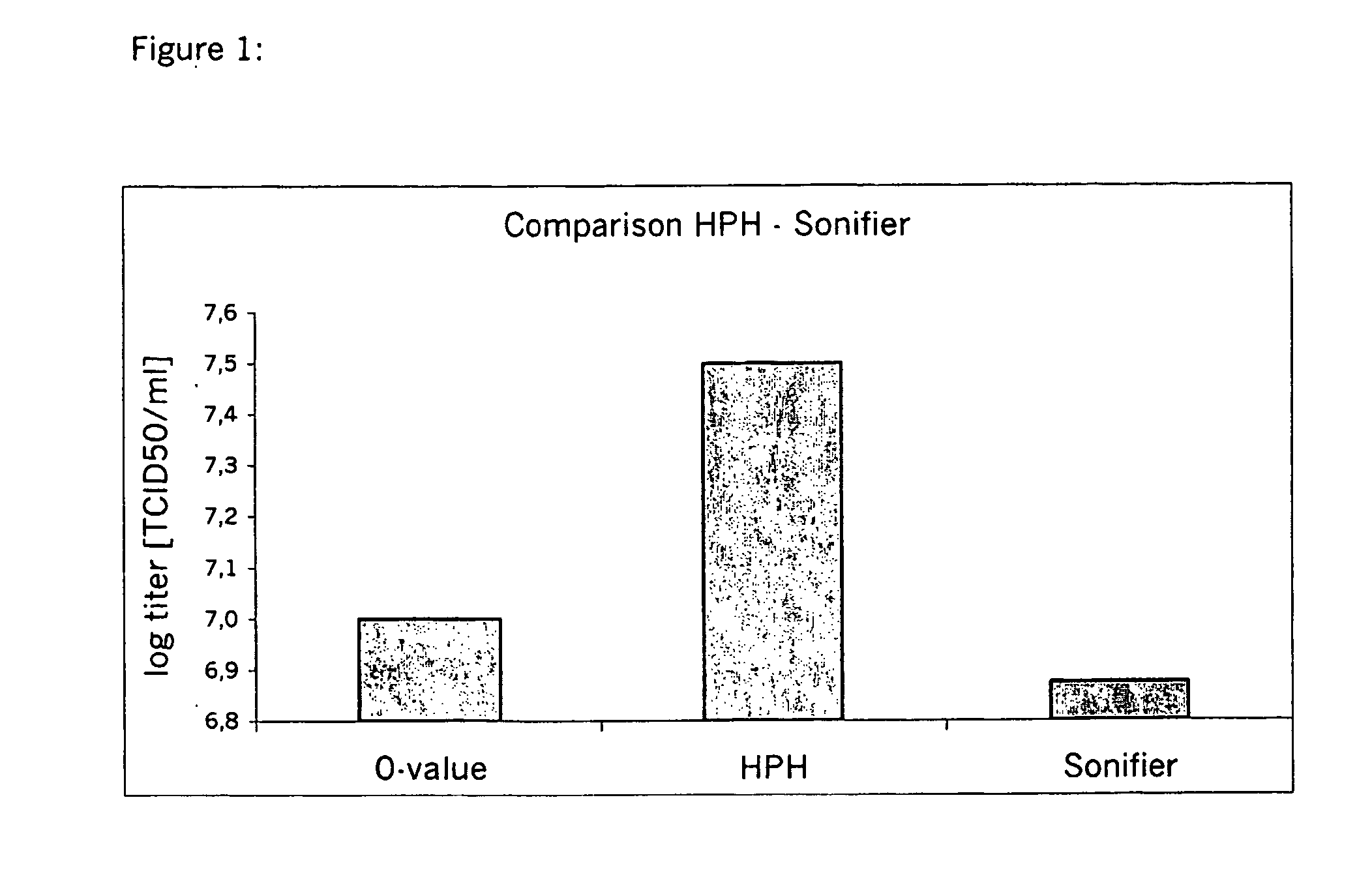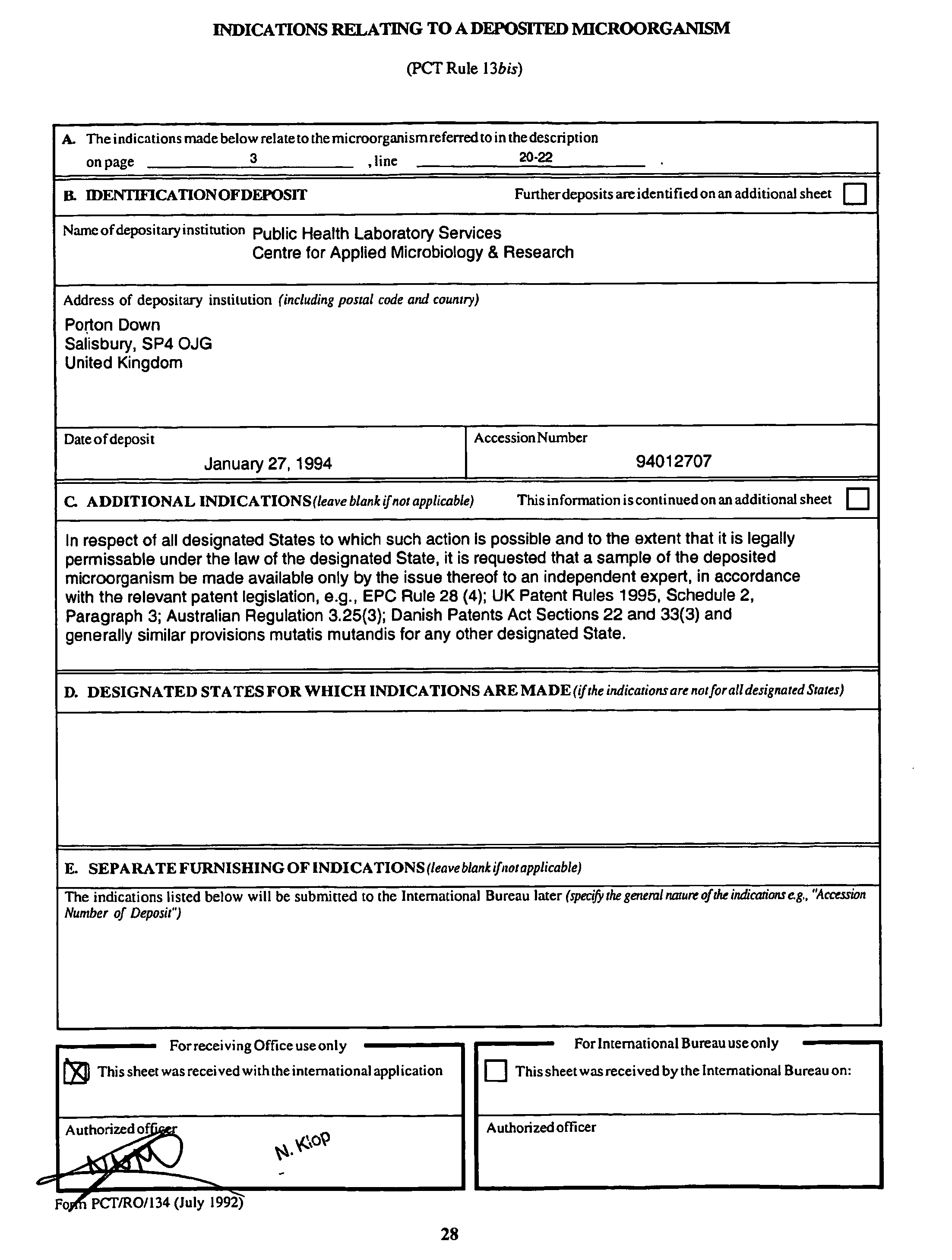Method for the recovery and purification of poxviruses from infected cells
a poxvirus and purification technology, applied in the field of poxvirus recovery, can solve the problems of homogenization and disruption of cells, poxvirus disassembly and replication, etc., and achieve the effect of easy control and easy scaling up from laboratory to industrial scal
- Summary
- Abstract
- Description
- Claims
- Application Information
AI Technical Summary
Benefits of technology
Problems solved by technology
Method used
Image
Examples
example 2
Titration of Modified Vaccinia Virus Ankara (MVA)
[0082] The titration of Modified Vaccinia virus Ankara (MVA) is performed in a TCID.sub.50-based assay using 10-fold dilutions in a 96-well format. At the endpoint of the assay, infected cells are visualised using an anti-vaccinia virus antibody and an appropriate staining solution.
[0083] 2-3 day old primary CEF (chicken embryo fibroblasts) cells are diluted to 1.times.10.sup.5 cells / ml in 7% RPMI. 10 fold dilutions are done with 8 replicates per dilution. Following dilution, 100 .mu.l are seeded per well of 96-well plates. Cells are then incubated over night at 37.degree. C. and 5% CO.sub.2.
[0084] Dilutions of the virus containing solutions are made in 10-fold steps (10.sup.-to 10.sup.-12 as appropriate) using RPMI without fetal calf serum. Then, 100 .mu.l of every virus sample is added to the cell containing wells.
[0085] The 96-well-plates are incubated at 37.degree. C. with 5% CO.sub.2 for 5 days to allow infection and viral replic...
PUM
| Property | Measurement | Unit |
|---|---|---|
| Pressure | aaaaa | aaaaa |
| Diameter | aaaaa | aaaaa |
| Atomic weight | aaaaa | aaaaa |
Abstract
Description
Claims
Application Information
 Login to View More
Login to View More - R&D
- Intellectual Property
- Life Sciences
- Materials
- Tech Scout
- Unparalleled Data Quality
- Higher Quality Content
- 60% Fewer Hallucinations
Browse by: Latest US Patents, China's latest patents, Technical Efficacy Thesaurus, Application Domain, Technology Topic, Popular Technical Reports.
© 2025 PatSnap. All rights reserved.Legal|Privacy policy|Modern Slavery Act Transparency Statement|Sitemap|About US| Contact US: help@patsnap.com



